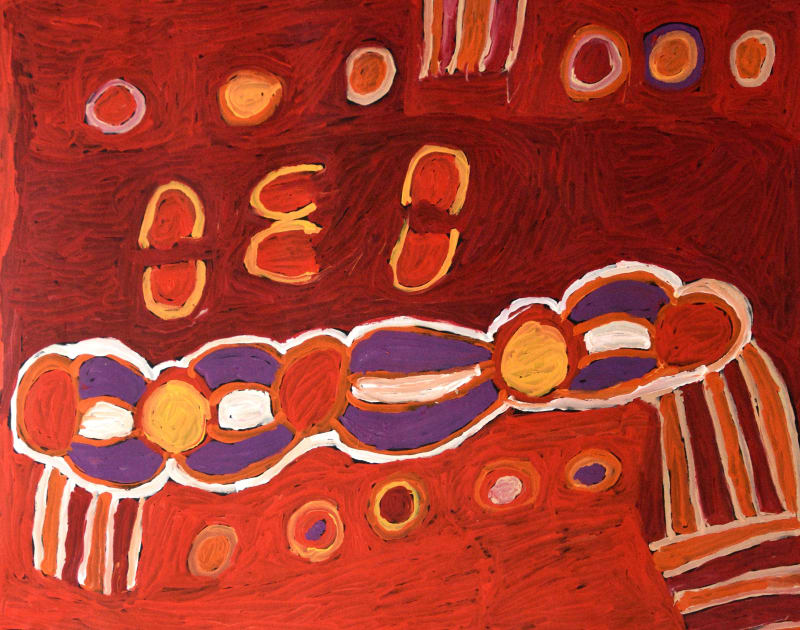Nellie Stewart Australian, Pitjantjatjara, 1930-2011
Nellie was born in the bush at Pipalyatjara, her father's country in the late 1930's. Her mother is from Irrunytju and is Kuntjil Cooper's older sister. As a young girl Nellie attended school at the Ernabella Mission and later worked in Alice Springs teaching Pitjantjatjara language with her husband. She began painting in 2007 when she moved to Nyapari with her family.
Nellie Stewart is a senior Pitjantjatjara woman. She has an intuitive feeling for painting, drawing on her deep cultural connection to her country associated with the Tjukurpa of Minyma Kutjara (the Two Sisters Creation story) from Irrunytju. Her works are bold and colourful landscapes depicting country traversed by the two Ancestral women. Landmarks created by their epic journeying and activities embody a spiritual essence, which is captured in her paintings.
"Nellie Stewart creates artworks of classical simplicity, based on her major Irruntyju-centred thematique of the Two Sisters Dreaming. Stewart's luscious, gestural works are characterised by bold colour juxtapositions, often compromising a limited palette of reds, mauves, and orangey-reds. Often she emphasises significant aspects of the broader narrative by her use of lighter, contrasting colours; for example she sometimes deploys a light mauve or white, in order to draw attention to or highlight a significant element or motif in the narrative.
Typically Nellie Stewart uses a technique of over-painting a dark background, using brushstrokes in ways that evoke ceremonial body painting designs painted onto dark skin. Stewart uses her brush in ways akin to ways in which women use their fingers to smear layers of paint onto the darker background, in preparation for women-only ceremonies ('inma'). The mark making, such an integral part of women's body painting, also plays a decision role in Nellie Stewart's artwork". Dr Christine Nicholls
Located about 100kms south of Uluru, Nyapari is set at the base of the majestic Mann Ranges in the heart of country traditionally owned by the Pitjantjatjara people. These ranges known to Anangu as Murputja, Likening the mountains to the bony ridge of a person's spine, are the source of many waterholes and traditional camping places. The homelands of Kanpi, Nyapari, Angatja, Umpukulu and Tjankanu have grown from these seasonal camping places into permanent settlements. Over fifty artist from Murputja joined together with family members living in taditional country 180kms to the south at Watarru and created Tjungu Palya (Good Together).
